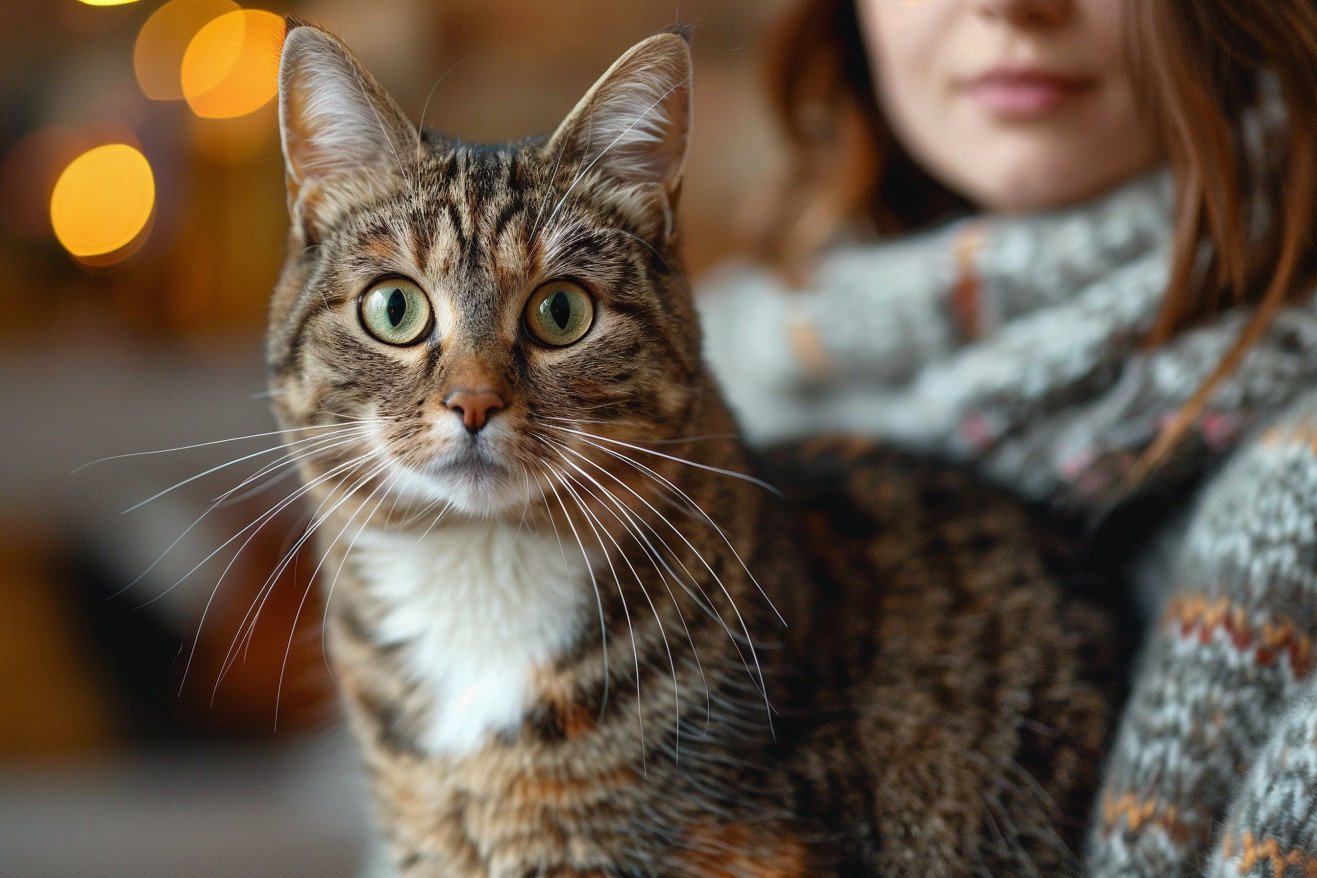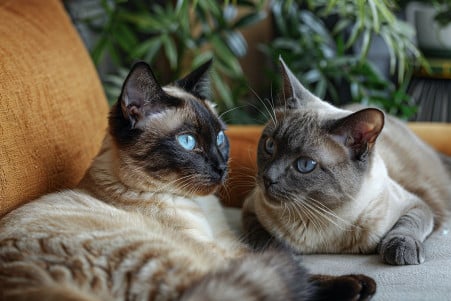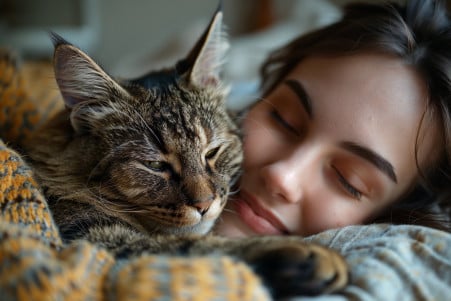Why Do Cats Put Their Butt in Your Face? Decoding Feline Behavior
16 March 2024 • Updated 15 March 2024

If you’ve ever lived with a cat, you’ve probably experienced this strange and somewhat off-putting behavior. When a cat greets you by showing you their butt, they’re doing so to display their scent glands and mark their territory. This is a sign of trust and a way of saying hello, and it’s often referred to as a “butt presentation.”
In this deep dive into feline behavior, we’ll look at the world of ethology and animal behaviorism to understand the ins and outs of this well-known but still somewhat mysterious feline behavior. Drawing on information from veterinary medicine and cat behavior professionals, we’ll explain why cats do this, how it fits into their larger system of communication, and what it means for the relationship between cats and their human caregivers.
Why do cats put their butt in your face?
Decoding the Mysteries of Feline Pheromones
Cats have a highly developed network of scent glands that they use to communicate with the world around them. Catster describes the locations of these glands as the face, paws, base of the tail, and around the anus, all of which are places where cats make contact with other cats, objects, and even their human family members. These glands produce pheromones, which are chemical signals that cats use to communicate with each other non-verbally.
Pheromones can be used to send a variety of messages, including information about identity, emotional state, and reproductive status. According to TexVetPets, social pheromones are used to communicate a sense of safety and security, while territorial pheromones are used to mark areas that cats want to protect from other cats.
The Feline Perspective explains that the Cat Appeasing Pheromone (CAP) is a comforting and reassuring pheromone, especially when it’s produced by a mother cat for her kittens.
This complex system of communication helps cats create and maintain social structures within their communities, including territories and hierarchies, without having to resort to constant physical conflict. Learning about the different types of pheromones can help you better understand your cat’s behavior and how they show trust and affection.
Feline Behavior Dynamics: Exploring Trust and Affection Through Butt Presentation
If your cat has ever walked up to you and turned around to show you their backside, you know that it can be a little jarring. However, as it turns out, this behavior isn’t meant to be rude or offensive.
According to Daily Paws, the act of showing a cat’s butt is a complex sign of trust and an invitation to socialize. Meanwhile, Cat Behavior Associates describes it as a polite feline hello that shows a cat is comfortable and willing to share their personal scent.
This behavior actually goes back to a cat’s earliest days. As Cats.com notes, kittens are used to their mothers grooming them, which includes the rear area—so it’s only natural for a cat to show this part of their body to someone they trust. By doing this, cats are showing that they trust and care for their human companions.
Understanding and accepting this behavior is important for building a strong relationship between cats and their humans. After all, this is a clear sign that your cat trusts you and feels safe around you. By learning to recognize these emotional cues, cat owners can build a stronger bond with their pets that’s based on trust and understanding.
What Does It Mean When Your Cat Shows You Their Butt?
The human response to cats showing their butts is complex and can be influenced by a number of psychological and social factors. A study in Scientific Reports found that personality and individual differences play a large role in human-cat interactions. For example, people with high levels of agreeableness may be more likely to respond positively to a cat showing its butt, interpreting the behavior as an attempt to increase intimacy.
In addition, socialization during childhood is an important factor in how people respond to feline behavior. A study by Dr. Kristyn Vitale found that people’s experiences with cats during childhood can impact how comfortable and accurate they are in interpreting behaviors like a cat showing its butt.
If people don’t have much experience with cats when they’re young, they may be more likely to misinterpret the behavior and see it as an offensive gesture rather than a sign of trust.
It’s important to overcome these potential misinterpretations, and the key to doing so is education. A study in PMC noted that increasing public awareness of cat behavior is important for increasing empathy and positive interactions between people and their cats. By helping people learn more about cats and how to respond to their behavior, we can help strengthen the bond between humans and cats.
How to Manage Health Risks When Your Cat Shows You Their Butt
While the CDC and other health organizations recommend that cat owners take precautions to avoid the health risks associated with cat-human interactions, including washing their hands after petting their cat, the fact remains that many people will continue to enjoy close relationships with their pets, including the occasional butt presentation.
The CDC also notes that while petting, hugging, and letting your cat lick you can increase the risk of zoonotic pathogen transmission, the risk can be managed by practicing good hygiene, including washing your hands after interacting with your cat.
In addition to good hygiene, other ways to manage the health risks associated with cat-human interactions include keeping your home clean and discouraging your cat from sleeping in your bed. In fact, a study published in PMC by Paul A. M. Overgaauw found that letting cats sleep in your bed was one of the factors that increased the risk of zoonotic pathogen transmission.
Regular veterinary care is also important. In addition to regular check-ups, preventive measures, such as keeping your cat up to date on their vaccinations, can help ensure that your cat remains healthy and free of parasites.
The Cornell Feline Health Center notes that responsible pet ownership also includes keeping your cat free of parasites by following a regular deworming schedule, controlling fleas, and keeping up with vaccinations. By doing so, you can enjoy the benefits of a close relationship with your cat while minimizing the health risks associated with cat–human interactions.
What It Means to Cats
As we’ve seen, the many layers of feline behavior make it clear that when a cat shows you its rear, it’s sharing a part of itself and offering a sign of trust. According to both John Bradshaw and Pam Johnson-Bennett, this strange form of greeting, which is based on pheromones and scent glands, is a way for cats to say “hello” and strengthen social bonds.
This is a deep and meaningful act that shows a cat’s trust in its human family and is a sign of consensual vulnerability. When we understand and honor this behavior, we can make our relationships with our cats more meaningful and empathetic, moving beyond mere coexistence.
The exploration to understand our cats’ quirks continues. But when we accept their behavior, we can honor their instincts and deepen our connections with them. Understanding the meaning of these rear-end greetings can help us establish a more harmonious and empathetic bond. So the next time your cat turns its back on you, recognize that it’s a sign of affection—a strange and wonderful aspect of the enigmatic world of cats.


